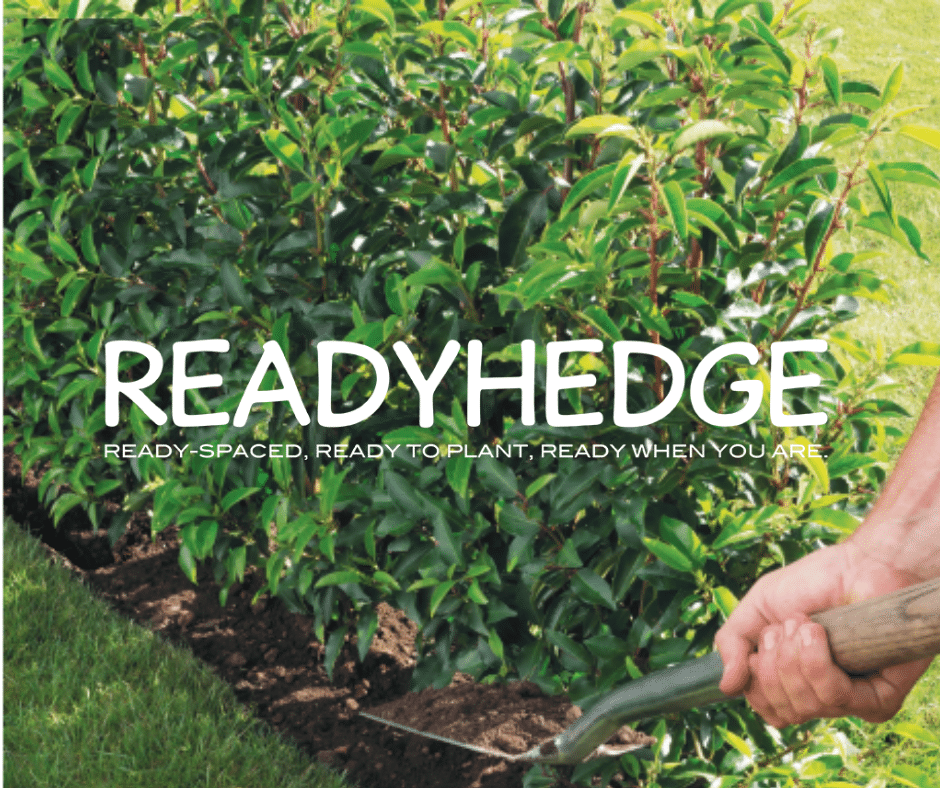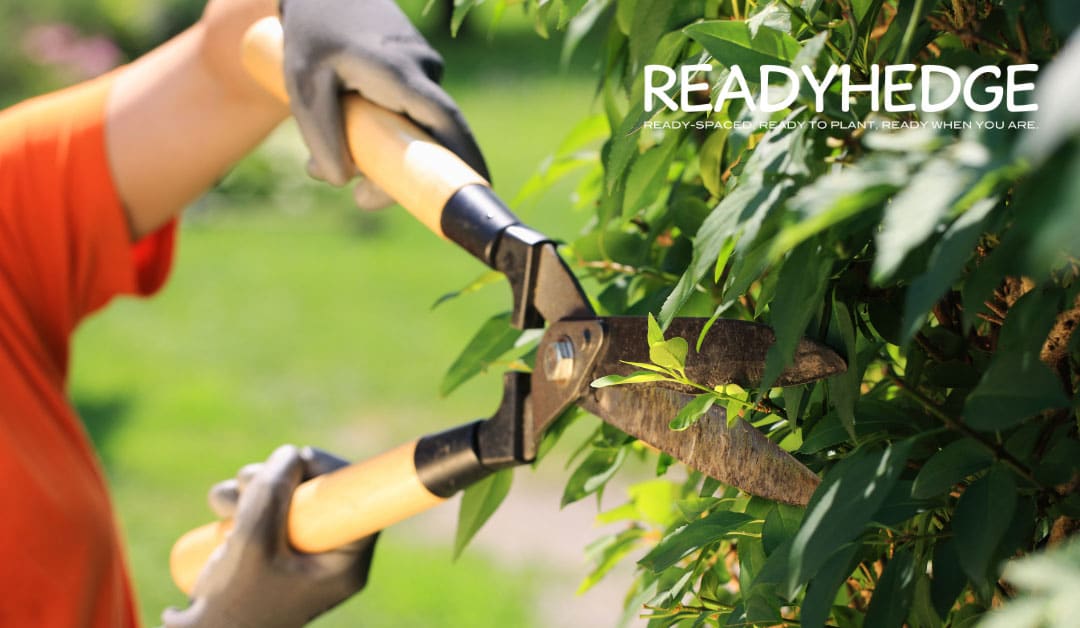How to Care for Your Newly Planted Hedge
This guide will take you through all the essential steps on how to plant hedges. We have a wide variety of hedging plants that you can browse,if you are simply considering upgrading your outdoor space.
Planting your Readyhedge trough or bag hedging requires some preparation to ensure successful growth. Here are some tips on how to care for your newly planted hedge:
1. Preparing and Planting the Hedge
If you’re not planting right away, keep the troughs or bags on the plants to protect the roots from frost. Space the hedging units apart so that light can get to the leaves, and keep the roots damp by watering when needed.
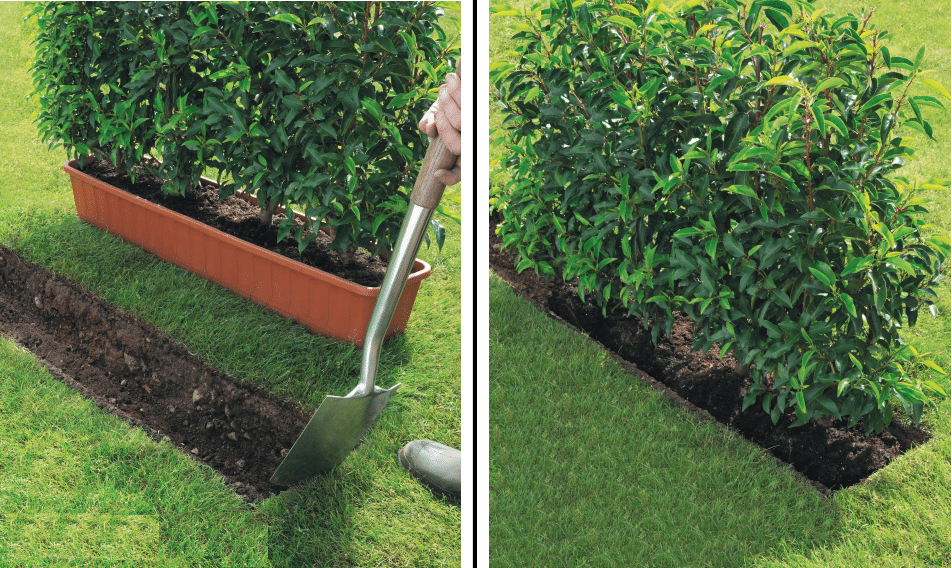
When you’re ready to plant, remove the troughs or bags just before planting. Dig a trench to the recommended sizes indicated below, and no deeper than the roots:
- For troughs: 20-25cm wide x 18cm deep
- For readybags: 45cm wide x 30cm deep
Remove the hedging from the trough or bag. Cut the cable tie on the troughs or cut down the four corners of the hedgebags. The hedging will come out as one full meter of hedging. Place each unit centrally in the trench, making sure that the soil around the plants is level with the ground surrounding the trench. Backfill soil around the roots, mixing in Osmocote PrePlant fertilizer at the recommended rate for the size of plant.
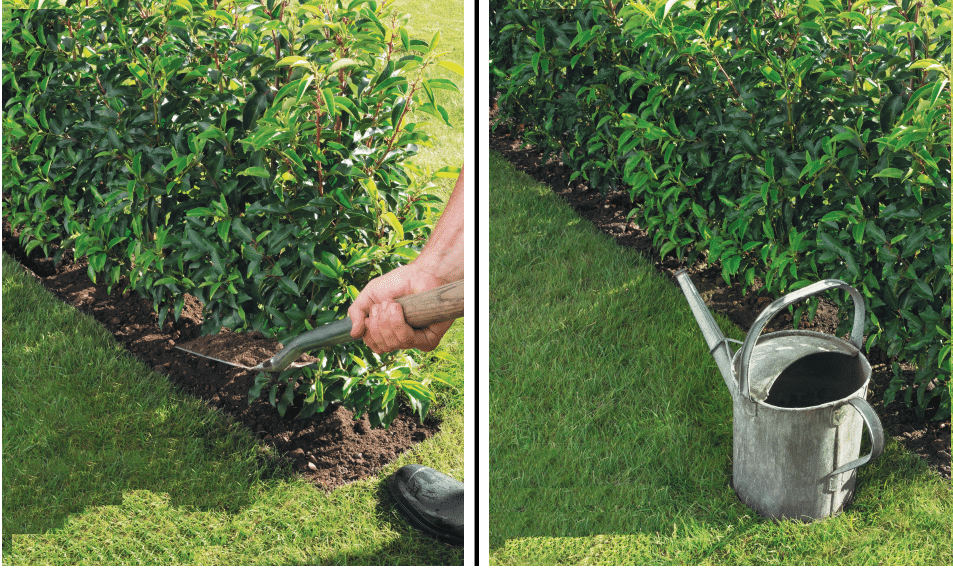
When backfilling, it’s beneficial to add well-rotted compost or a tree planting compost, such as John Innes No.3, at a rate of one-third compost to two-thirds normal soil. If you have a heavy clay soil, using good quality topsoil is advised. Firm the soil around the plants, water well and regularly until the plants are established. During hot, dry summer spells, this means watering every day, and an irrigation system can help immensely with this task.
2. Mulching and Watering
After planting, mulching around the base of the plants can help with water retention and weed control. However, do not mulch right up to the plants as this could rot the bark of the plants.
The most common reason for the failure of trees and shrubs is a lack of water or overwatering. To avoid this, perform a “squeeze test” by digging down 20cm, taking a handful of soil, and squeezing. If the soil binds and holds, there’s no need to water. If it binds but crumbles when touched, apply water and check again soon. If it doesn’t bind at all and falls readily through your fingers, water urgently.
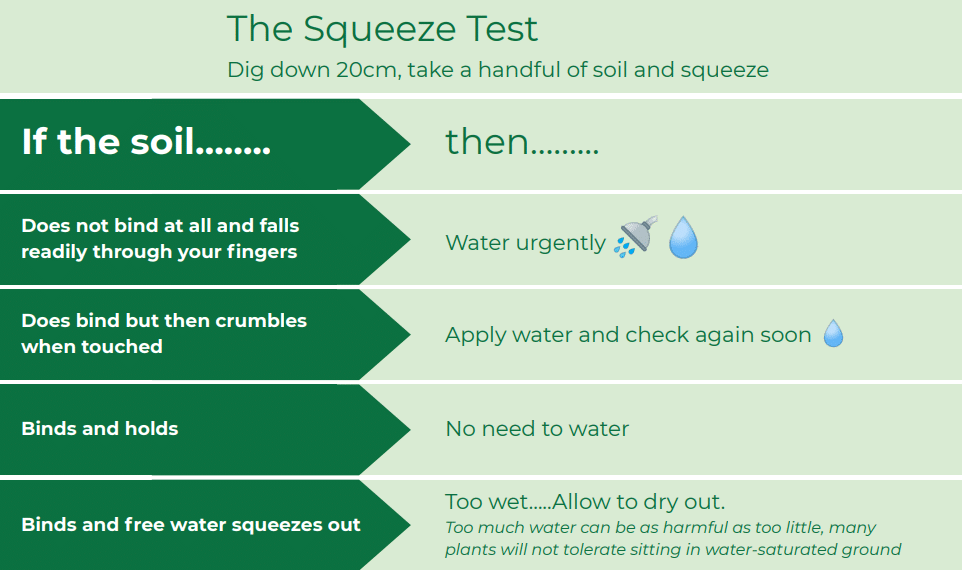
For the first year to 18 months, the hedging will require regular watering. As soon as the weather warms up in spring through to autumn, when you have warm and dry weather, the hedging will need to be watered. In the very warm summer months, this can be as regular as everyday. In winter, if it’s dry, some evergreens may still benefit from the occasional watering.
The key is to keep the plant moist but not overly wet. We recommend using leaky pipe to evenly distribute water across the whole hedge, as manual watering takes a long time and can lead to uneven watering and not enough water being applied.
3. Feeding & Maintenance
Feeding is also essential for the healthy growth of your newly planted hedge. When planting, it’s recommended to give the hedging a feed with a preplant fertilizer, such as Osmocote PrePlant. Trees, hedges, and shrubs will benefit from having a top dressing of a high nitrogen fertilizer, such as “Growmore,” applied in spring, which will give a four-week boost.
The application rate is 55 grams per square meter as top dressing, which is the equivalent of a small handful. Rake this into the top few inches of soil so it gets to where the plants can benefit the most. In autumn, an application of a fertilizer with a higher potash rate is advisable as it will help the rooting system. Always follow the manufacturer’s recommendations or ask at a local garden center.
Taking care of your newly planted hedge is essential for its survival and growth. It is important to keep the area around the hedge free of weeds and grass for the first few years to allow the plants to obtain the necessary nutrients and moisture. The hedge may experience leaf loss or discoloration in the first year after planting, but increasing the frequency of watering can help new leaves to appear.
Trimming your hedge after planting can help it look even better, but it is important to clean up and properly dispose of any trimmings to reduce the risk of diseases like Box Blight. Pruning side shoots and broken branches is also beneficial for the hedge’s establishment, but it should be avoided during very hot or very cold weather.
4. Recycling
Finally, Readyhedge troughs and Readybags can be reused to grow other plants, such as small herbs, salad plants, potatoes, and carrots. The terracotta troughs can be widely recycled through kerbside collections or community recycling centers, but black troughs and hedgebags may require checking
If you need any more help with your hedging plants, don’t hesitate to contact us! Our team of horticulturalists have extensive knowledge at your disposal.

